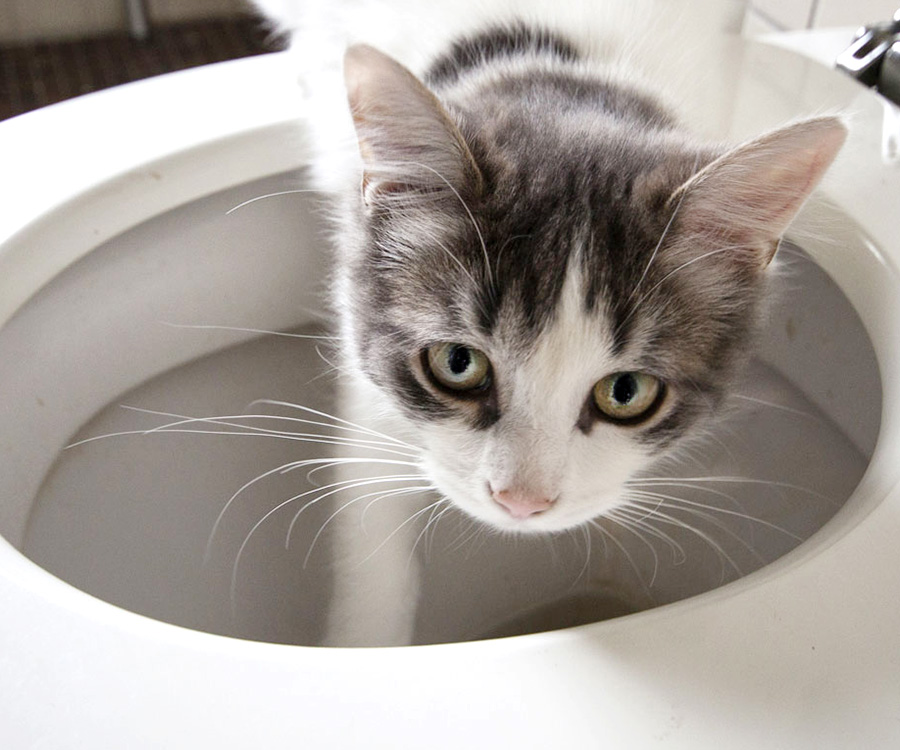Avoid Clogs and Damage: Never Flush Cat Poop Down Your Toilet - Expert Recommendations
Avoid Clogs and Damage: Never Flush Cat Poop Down Your Toilet - Expert Recommendations
Blog Article
We have stumbled upon this great article pertaining to Don’t flush cat feces down the toilet directly below on the net and believe it made sense to discuss it with you on this site.

Intro
As pet cat owners, it's necessary to be mindful of just how we dispose of our feline buddies' waste. While it may seem convenient to flush feline poop down the commode, this technique can have harmful consequences for both the environment and human health and wellness.
Environmental Impact
Flushing pet cat poop presents unsafe virus and parasites into the water supply, presenting a significant threat to aquatic ecosystems. These impurities can negatively affect marine life and concession water quality.
Wellness Risks
Along with ecological concerns, flushing pet cat waste can likewise present health dangers to humans. Feline feces may consist of Toxoplasma gondii, a parasite that can cause toxoplasmosis-- a possibly extreme disease, specifically for expecting females and individuals with damaged body immune systems.
Alternatives to Flushing
Luckily, there are more secure and extra accountable ways to throw away pet cat poop. Take into consideration the complying with choices:
1. Scoop and Dispose in Trash
The most usual technique of getting rid of feline poop is to scoop it into an eco-friendly bag and toss it in the garbage. Be sure to utilize a dedicated trash inside story and take care of the waste promptly.
2. Use Biodegradable Litter
Opt for eco-friendly cat litter made from products such as corn or wheat. These clutters are eco-friendly and can be safely thrown away in the trash.
3. Hide in the Yard
If you have a yard, take into consideration hiding feline waste in a designated area away from vegetable yards and water resources. Make sure to dig deep enough to stop contamination of groundwater.
4. Mount a Pet Waste Disposal System
Buy a pet garbage disposal system specifically made for feline waste. These systems use enzymes to break down the waste, decreasing smell and environmental impact.
Conclusion
Liable pet dog ownership extends past supplying food and shelter-- it also includes correct waste management. By avoiding flushing cat poop down the commode and going with alternative disposal approaches, we can reduce our environmental impact and protect human health.
Why Can’t I Flush Cat Poop?
It Spreads a Parasite
Cats are frequently infected with a parasite called toxoplasma gondii. The parasite causes an infection called toxoplasmosis. It is usually harmless to cats. The parasite only uses cat poop as a host for its eggs. Otherwise, the cat’s immune system usually keeps the infection at low enough levels to maintain its own health. But it does not stop the develop of eggs. These eggs are tiny and surprisingly tough. They may survive for a year before they begin to grow. But that’s the problem.
Our wastewater system is not designed to deal with toxoplasmosis eggs. Instead, most eggs will flush from your toilet into sewers and wastewater management plants. After the sewage is treated for many other harmful things in it, it is typically released into local rivers, lakes, or oceans. Here, the toxoplasmosis eggs can find new hosts, including starfish, crabs, otters, and many other wildlife. For many, this is a significant risk to their health. Toxoplasmosis can also end up infecting water sources that are important for agriculture, which means our deer, pigs, and sheep can get infected too.
Is There Risk to Humans?
There can be a risk to human life from flushing cat poop down the toilet. If you do so, the parasites from your cat’s poop can end up in shellfish, game animals, or livestock. If this meat is then served raw or undercooked, the people who eat it can get sick.
In fact, according to the CDC, 40 million people in the United States are infected with toxoplasma gondii. They get it from exposure to infected seafood, or from some kind of cat poop contamination, like drinking from a stream that is contaminated or touching anything that has come into contact with cat poop. That includes just cleaning a cat litter box.
Most people who get infected with these parasites will not develop any symptoms. However, for pregnant women or for those with compromised immune systems, the parasite can cause severe health problems.
How to Handle Cat Poop
The best way to handle cat poop is actually to clean the box more often. The eggs that the parasite sheds will not become active until one to five days after the cat poops. That means that if you clean daily, you’re much less likely to come into direct contact with infectious eggs.
That said, always dispose of cat poop in the garbage and not down the toilet. Wash your hands before and after you clean the litter box, and bring the bag of poop right outside to your garbage bins.
https://trenchlesssolutionsusa.com/why-cant-i-flush-cat-poop/

As a reader about Can You Flush Cat Poo or Litter Down the Toilet?, I assumed sharing that piece was mandatory. If you liked our article if you please remember to pass it around. Many thanks for your time. Visit again soon.
Get Quote Now Report this page